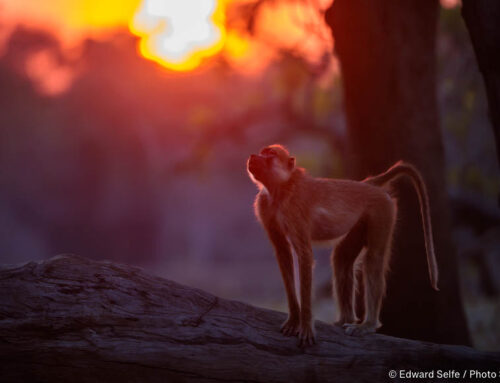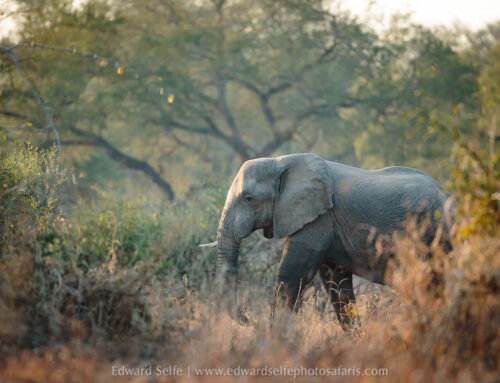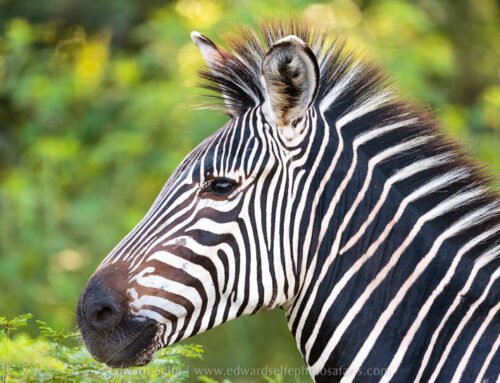I was recently leading a photo safari in the Nsefu Sector of the South Luangwa National Park. 3 lions had killed a buffalo the previous day. We had enjoyed all the drama of this sighting the previous morning and afternoon. By the time we returned on the second morning, the lions had moved away and the hyaenas were making short work of the left-overs.
It was interesting to watch and photograph the hyaenas at work, fighting over the remains, with the larger females gaining the best shares. But photographically, it was a little dull, with the soft morning light seemingly incongruous with the carnage that was occurring!

I scouted around and saw a place where several hyaenas were clustered round a section of the thick, dark hide of the buffalo. The light was almost hitting them as the sun climbed behind the trees. I moved the vehicle quickly to position us alongside and below them, and we waited for the light to break over the trees.
Thereafter it was luck…would the hyaenas hang around? Would they drag the hide into the bushes? Would they turn away from us spoiling the shot? We were lucky that they remained where they were and faced towards us throughout, proving my theory that great wildlife images are a combination of good foresight, good technique and good luck! We enjoyed 5 minutes of perfect lighting which allowed us great back-lit shots which much better conveyed the drama of the situation, as well as being more pleasing images.
From a technical point of view, there were several factors we had to consider to get these shots; large areas of the scene are very dark (because they are the shaded side of the subject, away from the sunlight) which will tend to result in images which are too bright, due to the camera’s metering behaviour. We underexposed 1.3 stops to ensure that the image maintained its moody intensity and to retain the interesting rim-lighting halo around the subject. (Remember 1.3 stops under-exposed is a dramatic adjustment – more than halving the light that the camera uses to make the image.)
We also had to take care with the focusing, since the camera’s AF system looks for contrast, and there is little contrast on the reverse side of these hyaenas. With little contrast to lock onto, the system might ‘miss focus’ giving you a shot which is not as sharp as you would like. Choosing to focus on the intersection of the animal with the background (perhaps around the muzzle, or the ears) ensures that there is enough contrast for the AF system to do its job.
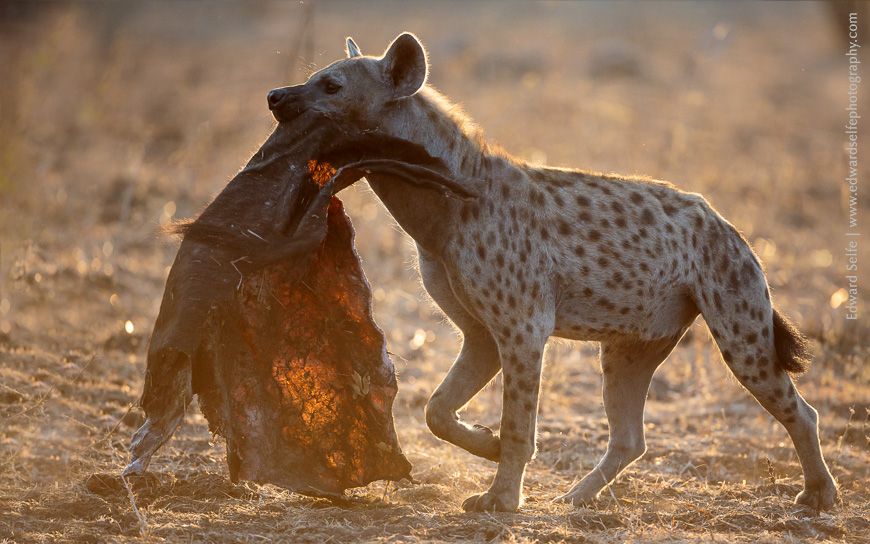
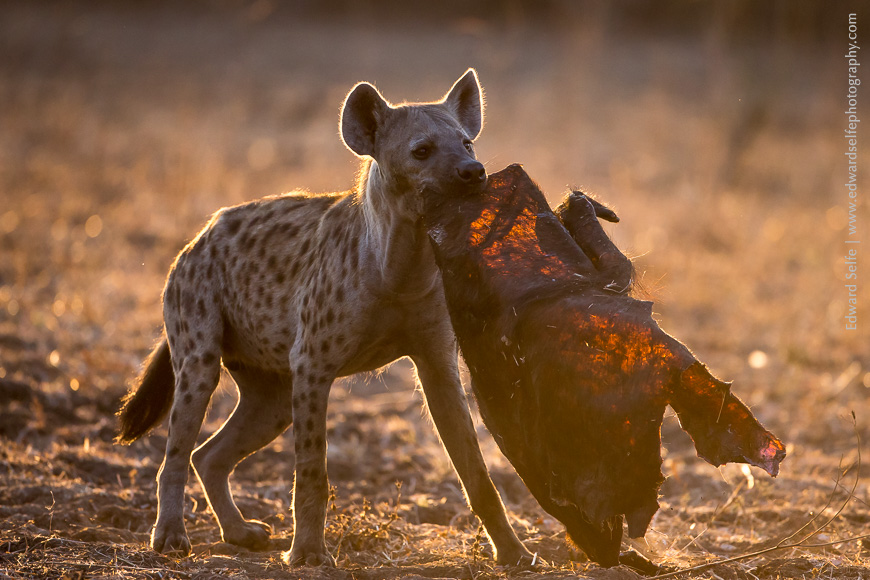

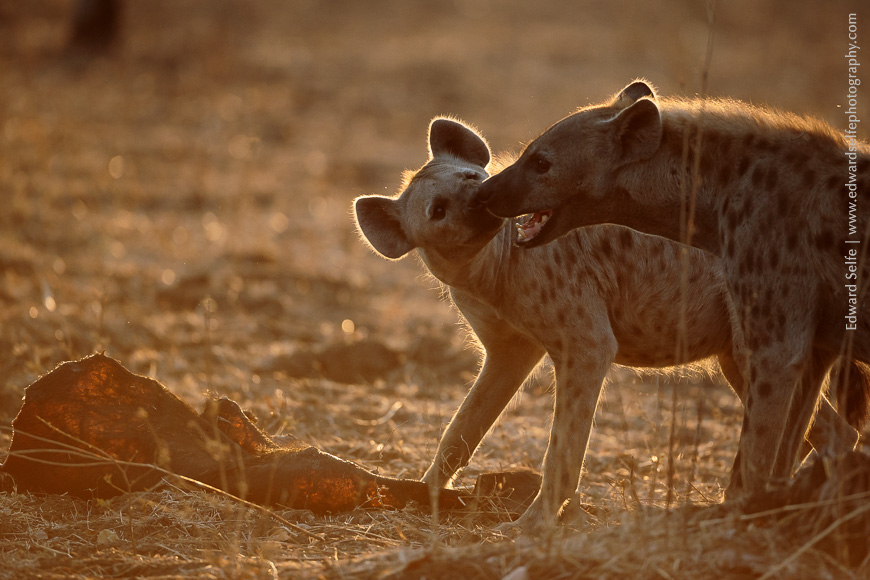
Choosing to abandon the main part of the carcass, which was the epicentre of activity, to seek better photo chances nearby gave us this series of interesting images of hyaena behaviour….and in excellent light. Seeking unusual and interesting images is what we do on photo safaris. If you would like to join me, get in touch via the contact page.

